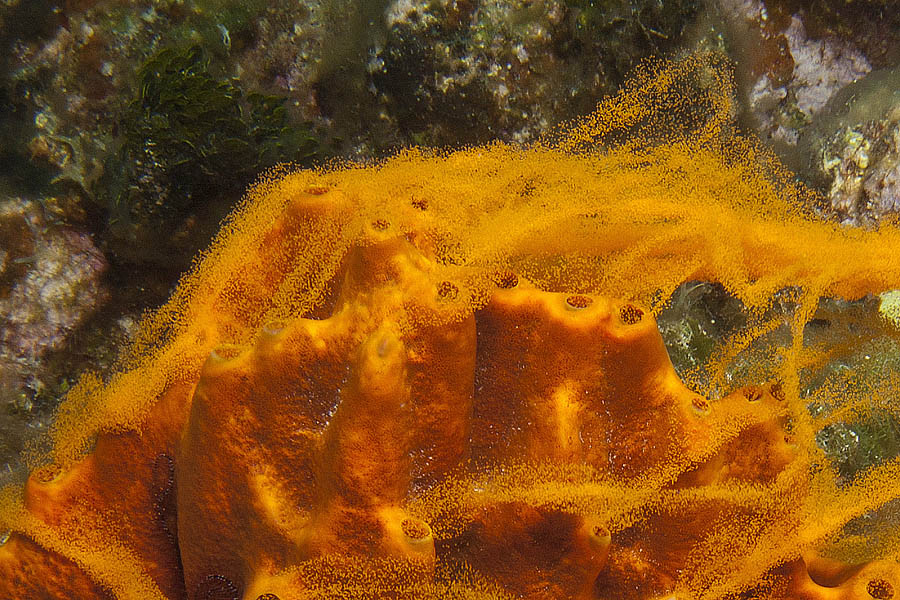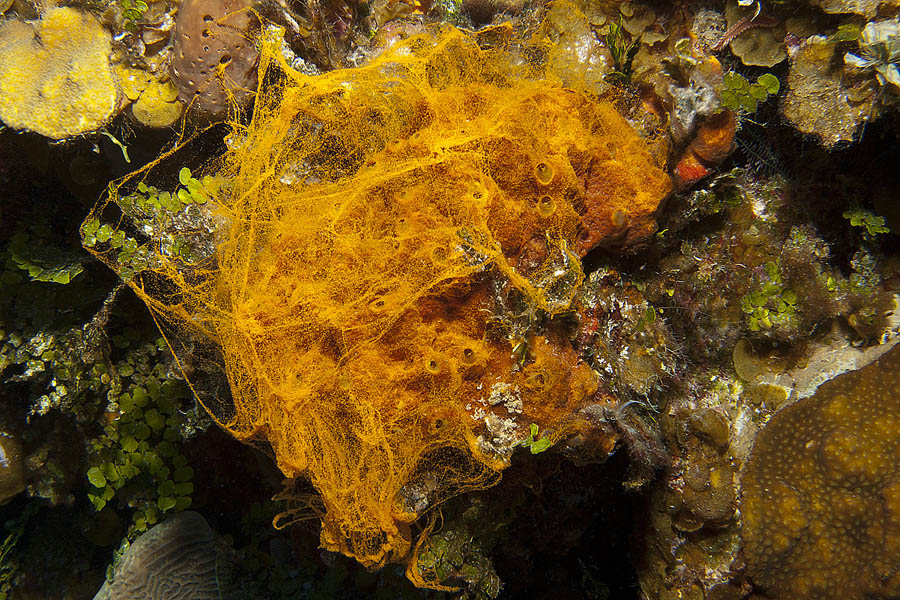From August 19th-22nd, we experienced nothing but great wall diving around Little Inagua, which is always a diver’s delight. The island of Little Inagua is five miles to the northeast of Great Inagua, and hosts a large Land and Sea Park. The island is 30 square miles and home only to herds of feral donkeys and goats, descendants of stock introduced by the French. A protective reef surrounds Little Inagua on all sides, beginning at 14m depth and dropping nearly vertically to the ocean floor.

The winds come from the southeast in the summertime creating 4-6 foot swells and making scuba surveys on the south and east facing coastlines nearly impossible. Charts show the north and south ends of the island as sheer drop-offs with reefs almost exclusively on the east and west coasts. This layout combined with the windy weather limited our research capabilities around Little Inagua to mostly the north and west sides.
Our work during this trip has been on selected components of the reef system: reef-building corals, fishes, and algae. Sponges are outside of our focus, but are a major component in many reef structures. There are between 5000 and 10,000 species of sponge. The wide range in numbers is indicative of how poorly studied this group has been. Most studies have focused on chemical compounds produced by sponges, which may prove useful as sources for new pharmaceutical drugs.
Eye-Catching Sponge Spawning at Little Inagua
Sponges have a simplistic anatomy, containing neither skeleton nor body organs. Reproduction in these animals is also fairly uncomplicated, but it is eye catching. During sponge spawning, sperm cells are released through outflow openings making it look as if the sponge is smoking.

Most sponges are hermaphrodites, which means they function as both sexes simultaneously. If sperm makes it through the water column to another sponge of the same species, fertilization takes place within the sponge. Some species of sponges release the fertilized eggs within mucus filaments. With luck, the eggs will hatch into larvae that will settle down on the reef to form new sponges.
On the northwest side of Little Inagua we noticed several sponges called the Brown Encrusing Octopus Sponge (Ectyoplasia ferox). This brown to orange sponge is so named because one of its growth forms evokes the shape of an octopus arm with the outflow openings resembling sucker discs. These caught our attention because August is the usual time for sponge spawning in this species and several of the sponges were seen casting off mats of bright orange eggs.

Written by Ken Marks and Amanda Williams
(Photo/Images by: 1 Amanda Williams, 2-3 Ken Marks)
To follow along and see more photos, please visit us on Facebook! You can also follow the expedition on our Global Reef Expedition page, where there is more information about our research and our team members.